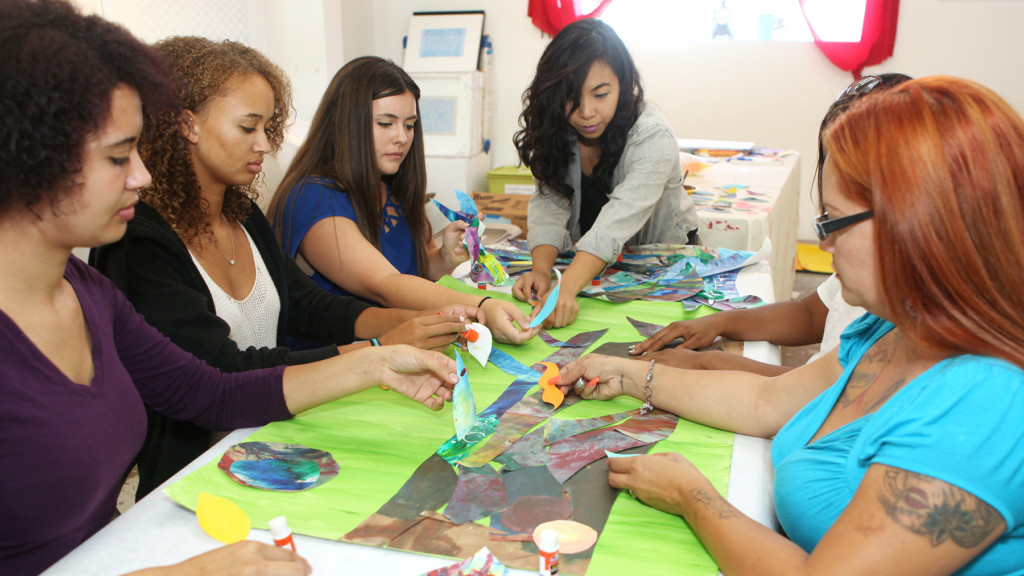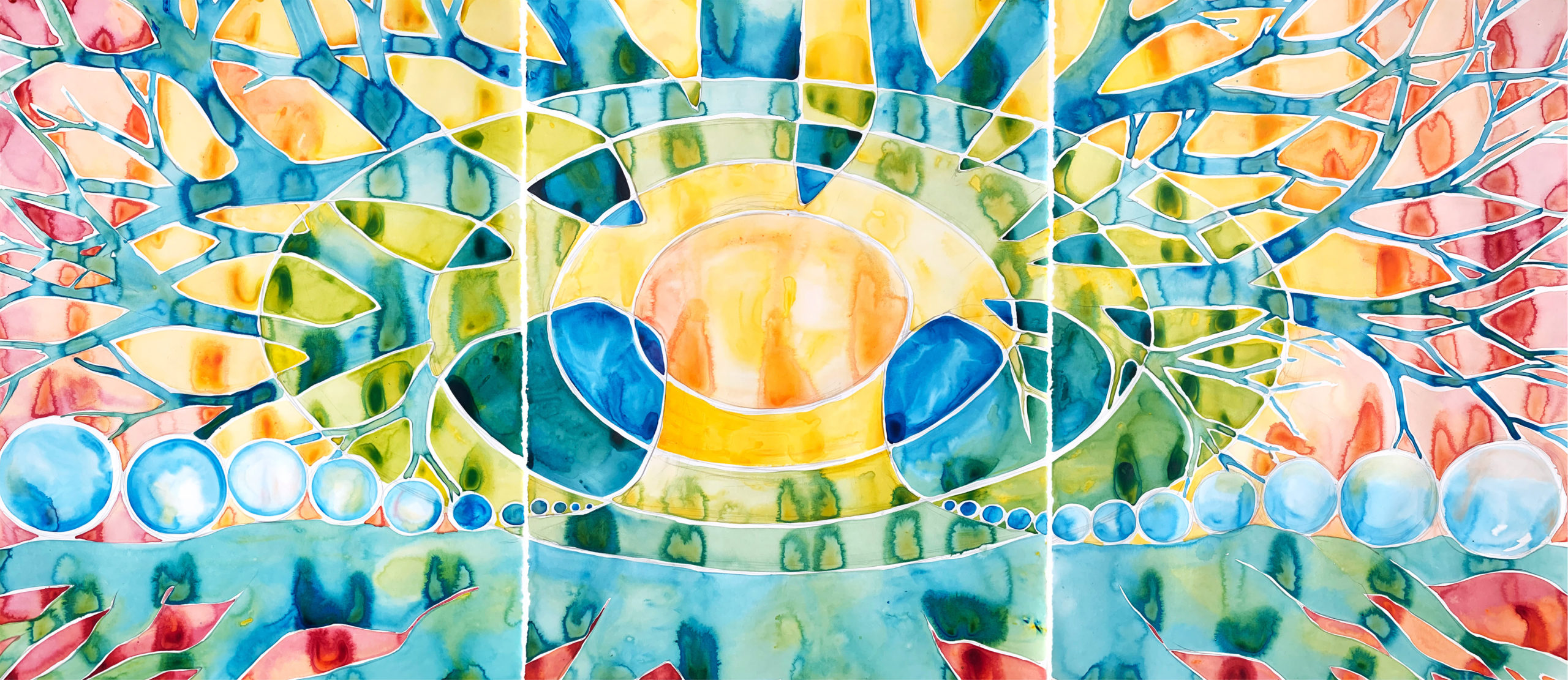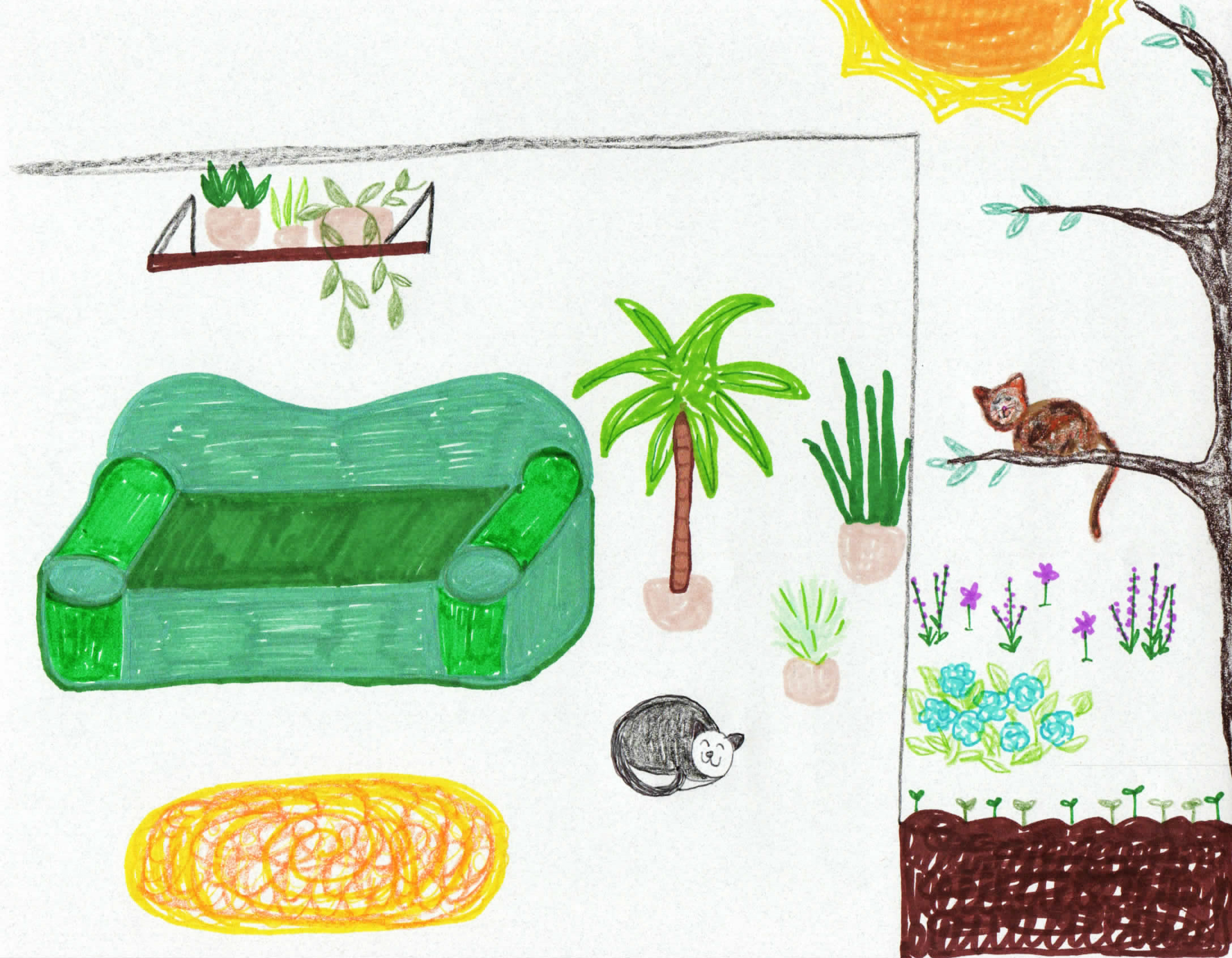The expressive arts (i.e. visual art, music, and movement) is the language of the mid-brain where our emotions and memories reside. For those who have experienced a traumatic event(s) and struggle to find the words to express what they are feeling, using one or more of the expressive arts almost always unlocks the pre-frontal cortex so that words can now be spoken.
The next step to healing is then linking the right and left hemispheres of the brain together. This is often done with bilateral stimulation—right, left, right, left. Some examples are walking, running, and tapping on alternate sides of the body. Some well-regarded brain researchers believe that bilateral stimulation activates both hemispheres of the brain in the same way that REM sleep does. During REM sleep, our eyes move rapidly back and forth, and we process and integrate information.
We are not taking something from outside of ourselves and putting it in, but rather, we use this method to enhance the resources that are already within us.
One of my favorite books, Tapping In, A step-by-step guide to activating your healing resources through bilateral stimulation; Reduce anxiety, sleep better, overcome trauma by Laurel Parnell, Ph.D. is a helpful guide in breaking down this amazing technique into easy steps that anyone can apply.
Parnell suggests starting off with either a guided imagery or creating a visual drawing and then adding short sets (30 seconds) of bilateral stimulation (tapping on opposite sides of the body) works better than the imagery alone to calm and provide a sense of control over a survivor’s life. It often begins a free-associative process between mind and body which can result in new insights and new ways of viewing themselves and their lives.
This technique is referred to as resource tapping (RT) and is not EMDR (eye movement, desensitization, & reprocessing). RT is used to prepare a survivor for EMDR by installing positive resources for the survivor to use if they become overwhelmed during the EMDR process.
I integrate RT with all of my windows workshops. Creating a Safe Place is one that immediately comes to mind. Once the survivor has completed their drawing, then I ask them to imagine themselves in the scene. Then we go through all five senses—what do you see, what do you hear, what do you smell, what do you feel (touch), what do you taste? When they are fully there then I have them tap “being there” into their nervous system using bilateral stimulation. This helps them get the feeling of safety and security into their nervous system where trauma is often stuck.
I have also used RT with the Affirmation Hearts activity. At the end of the exercise, I ask them to select one of the affirmations and then we go through all five senses and tap it in for 30 seconds. Survivors almost always remark how calm and peaceful that they feel afterwards.
RT can be used to reduce anxiety, depression, improve sleep, increase creativity and performance, aid in healing, decrease distress after a traumatic incident, build confidence, and cope with chronic illnesses such as cancer, diabetes, etc. And the majority of those we serve have chronic illness!
It’s very important to know that RT is not therapy. It is a stand-alone technique and focuses only on installing positive resources with a short amount, no more than 30 seconds, of bilateral stimulation. The key to using this model is to select the resource best suited for the situation. For example, if one is feeling depressed, then choose an image that is uplifting, go through all five senses, and tap it in. Then check in with yourself and go through the process several more times if necessary. By repeating this process, one is creating and strengthening new neural pathways.
Another important point to remember is that by using this process, we are not taking something from outside of ourselves and putting it in, but rather, we use this method to enhance the resources that are already within us which is so important to helping survivors build their self-efficacy so that they can start to trust themselves again. RT can be done by yourself without a therapist.
Happy tapping!
Candace L. Wheeler, LPC, CDBT, NCC
Windows Facilitator, Restoration 1:99
Washington DC
Parnell, Laurel. Tapping In, A step-by-step guide to activating your healing resources through bilateral stimulation; Reduce anxiety, sleep better, overcome trauma. 2008. Sounds True, Boulder, CO.
Utilize this worksheet to draw your safe place and imagine yourself in the scene.
Download Worksheet
Want to utilize art to help people connect to their inner resources?
Attend a Training
A Window Between Worlds (AWBW) supports hundreds of direct service organizations across the country to incorporate creative expression into their work with trauma survivors. With this blog we uplift the voices of our art workshop facilitators and participants. We invite you to take in this perspective, notice what resonates and explore how it may fit into your life.





